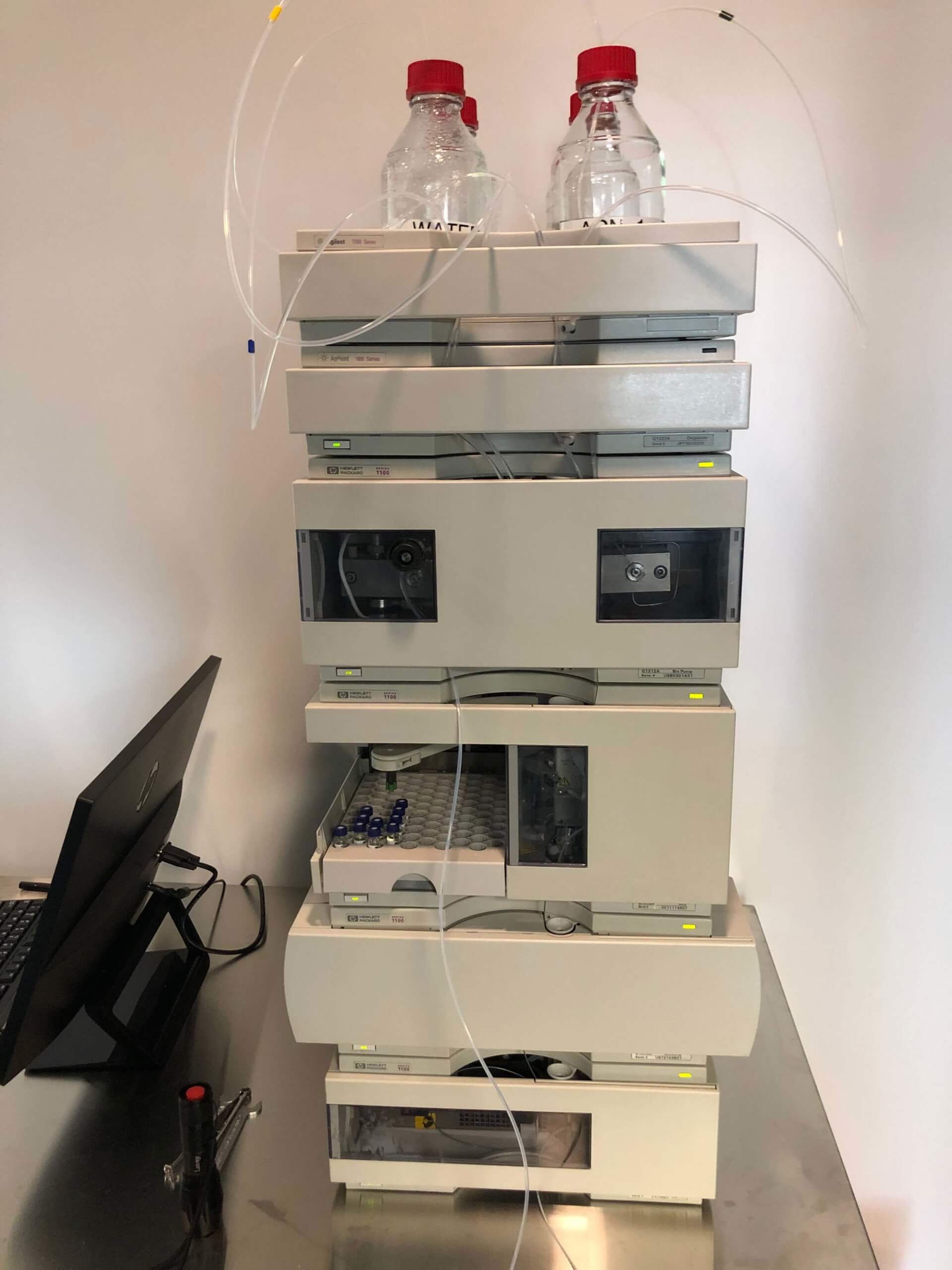Amongst the issues facing the cannabis and hemp industries are inconsistencies with testing. Proper assays of potency are critical to many facets of the field. Accurate flower assays provide information to the consumer on the strength and cannabinoid content of the material they will smoke. Flower assays are also used to determine extraction efficiencies and yields. We use in-house HPLC Testing and will discuss our methods in this post.
The extract must also be carefully assayed in order to produce products from it. Cannabis and hemp products must conform to local regulations regarding maximum potency and cannabinoid profile.
The final finished products must also be tested, so the consumer can be confident they are receiving the correct dosage. This is the most difficult test of all, especially with complex products like cookies, brownies and things like barbecue sauce. All the other ingredients in the product can interfere with the assays, and often the cannabinoids are extracted from the sample, introducing error due to unknown extraction yields from the complex matrix.
In this post, I’ll discuss flower assays. In our experience, flower tests by independent labs can be all over the place. The reason is simple: most assay protocols call for grinding the flower sample prior to extraction and assay. So, the sample is ground, then dissolved in chloroform or another toxic solvent, then the extract is diluted and assayed by HPLC. The problem here is that grinding flower can dramatically change the observed cannabinoid assay. Why? Well, all the cannabinoids in the plant are present in the trichomes, and the trichomes are located on the outer part of the flower. Grinding destroys the trichomes, and the cannabinoids stick to the grinder. This is totally unacceptable, and the assays can vary substantially, depending on the amount of trichome/cannabinoids left in the grinder.
We have a better way, which we disclosed at the National Meeting of the American Chemical Society three years ago. We don’t grind. We do full flower assays by simply soaking the material overnight in ethanol. The ethanol dissolves both the trichomes and their contained cannabinoids, leaving an ethanol solution ready for testing.
The basic protocol is to soak 0.5 to 1.0 g flower in 50 ml ethanol overnight. Then a 5X dilution of the ethanol is needed to produce the HPLC testing sample. Of course, proper analytical techniques must be used, including careful weighing of the flower and the ethanol.
I’d be happy to send my ACS presentation (with more details) to anyone. Just email us at [email protected].
Shop USDA Certified Organic CBD Products!
